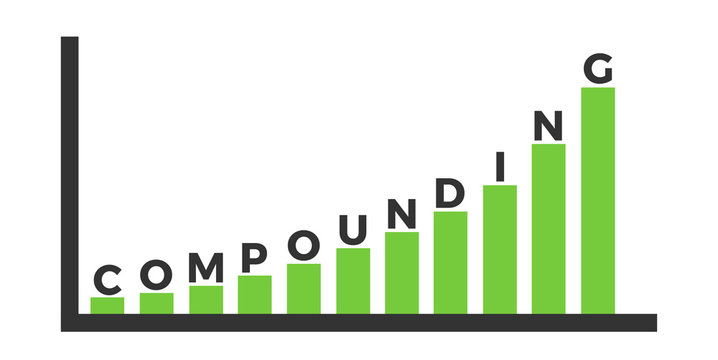Compounding is a cornerstone of investing and personal finance, often hailed as the “eighth wonder of the world.” Its ability to grow your investments exponentially makes it a vital concept to understand and harness. In this blog, we’ll dive into what compounding is, how it works, and why it’s crucial for your financial future. We’ll also include visuals to make these concepts clear and engaging.
What is Compounding?
Compounding is the process where an investment grows because the earnings on an investment, both capital gains and interest, earn interest over time. Essentially, compounding is earning interest on your interest, which leads to exponential growth.
The Formula for Compounding
The formula to calculate the future value of an investment using compounding is:
𝐴=𝑃(1+𝑟𝑛)𝑛𝑡A=P(1+nr)nt
Where:
- A is the amount of money accumulated after n years, including interest.
- P is the principal amount (the initial sum of money).
- r is the annual interest rate (decimal).
- n is the number of times that interest is compounded per year.
- t is the time the money is invested for in years.
Example of Compounding
Imagine you invest $1,000 at an annual interest rate of 5%, compounded annually. Here’s how your investment would grow over time:
- Year 1: $1,000 * (1 + 0.05)^1 = $1,050
- Year 2: $1,050 * (1 + 0.05)^1 = $1,102.50
- Year 3: $1,102.50 * (1 + 0.05)^1 = $1,157.63
- Year 4: $1,157.63 * (1 + 0.05)^1 = $1,215.51
- Year 5: $1,215.51 * (1 + 0.05)^1 = $1,276.28
As you can see, the interest earned each year increases because you earn interest on the previous year’s interest as well as the initial principal.
The Power of Time in Compounding
Time is a critical factor in compounding. The longer you let your money grow, the more powerful compounding becomes. This is due to the effects of earning interest on interest over time.
Consider two investors:
- Investor A invests $1,000 per year for 10 years and then stops, allowing the investment to grow for another 20 years without additional contributions.
- Investor B starts investing $1,000 per year 10 years later than Investor A and continues to invest $1,000 per year for 20 years.
Even though Investor B invests for a more extended period, Investor A ends up with more money at the end because their investment had more time to compound.
Example of Time and Compounding
- Investor A: $1,000 per year for 10 years, then growth for 20 years.
- Investor B: $1,000 per year for 20 years, starting 10 years later.
By retirement, Investor A’s portfolio will likely be significantly larger due to the additional 10 years of compounding.
Practical Applications of Compounding
Compounding has practical applications in various areas of personal finance:
Savings Accounts and CDs
Most savings accounts and certificates of deposit (CDs) use compound interest. By leaving your money in these accounts, you can watch it grow over time.
Retirement Accounts
401(k)s, IRAs, and other retirement accounts benefit immensely from compounding, especially when contributions are made regularly, and the funds are left to grow over decades.
Investments in Stocks and Bonds
Investing in stocks, bonds, or mutual funds can lead to compounding growth as the value of the investments increases and dividends or interest are reinvested.
Tips to Maximize Compounding
- Start Early: The sooner you start investing, the more time your money has to grow.
- Regular Contributions: Consistently adding to your investment increases the principal and the potential for growth.
- Reinvest Earnings: Instead of cashing out dividends or interest, reinvest them to take full advantage of compounding.
- Be Patient: Compounding works best over long periods. Stay invested and avoid frequent withdrawals.
Conclusion
Compounding is a powerful financial concept that can significantly impact your wealth-building journey. By understanding and leveraging the power of compounding, you can set yourself up for a more secure financial future. Remember, the key ingredients are time, consistency, and patience. Start early, invest regularly, and let compounding work its magic!

